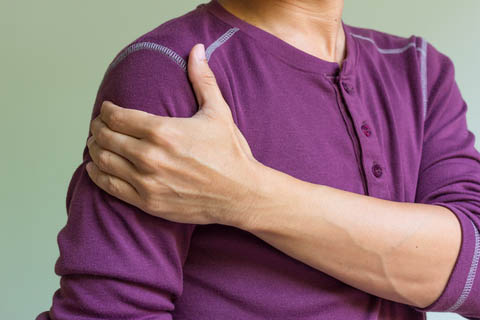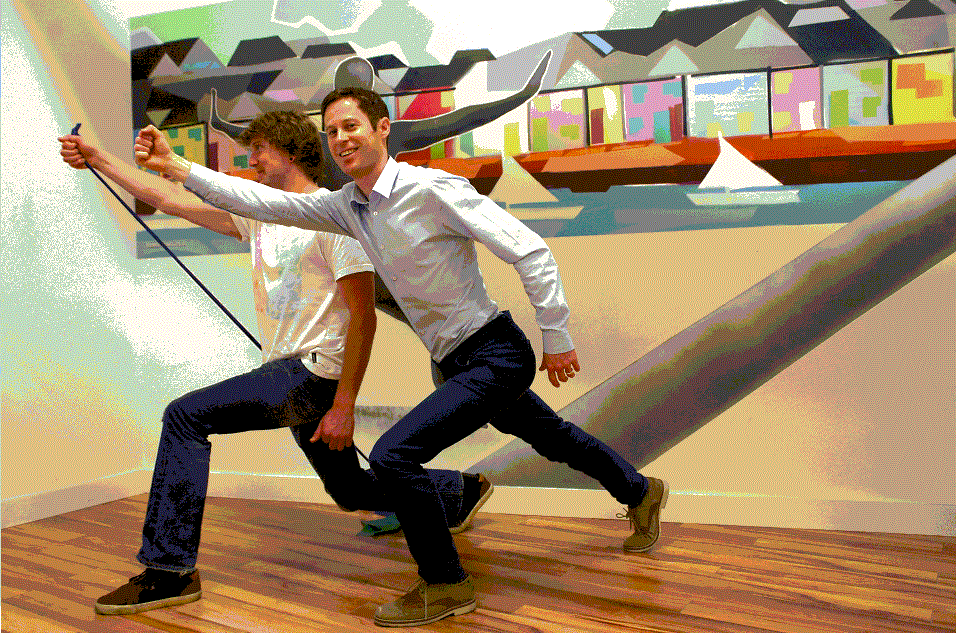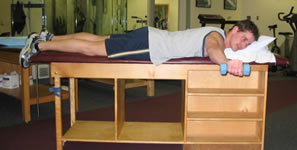|
BOOK NOW |
ASK ABOUT YOUR PAIN |
Home > Shoulder Physiotherapy > Blog > Clicking Shoulder Physiotherapy
Clicking Shoulder Physiotherapy

Clicking shoulder is a common complaint with swimmers where the shoulder ‘clicks’ with movement or with load/strain. Clicking shoulders is also common in individuals who engage in activities or sports with lots of overhead arm motion eg:
- housewives, secretaries
- sports eg tennis, badminton etc
Inflammation is a symptom and becomes a cause
Clicking shoulder condition is often is misdiagnosed/mistaken as
- rotator-cuff
impingement or
- tendinitis (inflammation)
But this is just half the story - impingement is a symptom, like inflammation is a symptom.
They're more often than not, NOT causes that led to the inflammation in the first place. You see, rotator-cuff injuries and inflammation can be caused by direct damage or disease in the shoulder such as:
- torn ligament
- torn muscle
- bone spurs that can irritate nearby structures
shoulder Clicking due to Directional Instability
More often than not, inflammation in our rotator cuff is first caused by shoulder joint instability ie -
- the shoulder (glenohumeral)
joint may be too loose in multiple directions (medically termed as multi-directional
instability) or
- loose in a specific direction (medically termed as uni-directional instability).
|
For multi-directional instability (MDI), excessive movement of the head of the humerus (the ‘ball’ end of the bone in your upper arm) which causes it to grind/rub/scrape against the cartilage that helps hold the shoulder joint together (labrum). Over time, this rubbing and scraping gradually wears out the cartilage and the tendons nearby. The ‘clicking’ sound in the shoulder comes from the head of the humerus popping in and out slightly from the shoulder joint. Multi-direction instability happens due to shoulder capsule laxity and unfortunately is often genetic in nature. |
For uni-directional instability (UDI) this condition is much more common in individuals who participate in lots of overhead throwing sports like badminton, tennis and baseball pitchers, and more often than not, tends to occur in one arm. The most common direction is for the humerus head to shift/move forward. Unlike multi-directional instability which has genetic dispositions (see left), uni-directional instability is basically caused by a few key muscles losing control of the joint and failing to holding it stable. In most cases, it is the muscle holding the head of the humerus (subscapularis) that allows the shoulder to roll forward excessively, over-stretching the shoulder joint. Similar to the case of MDI, the cartilage wears out and nearby tendons get impinged or pressed on. |
Is it Multi-Directional Instability or Uni-Directional Instability?
An experienced sports doctor/physician or senior sports physiotherapist will be able to perform a battery of assessments and tests to confirm which diagnosis best describes your specific shoulder problem.
What can we do now?

If the patient/individual needs to work or athletes has to compete or has an upcoming competition, then what we will recommend and focus on for the short term includes physiotherapy interventions such as
- deep tissue massage
- trigger-point release
- ultrasound therapy and Indiba therapy to accelerate soft tissue healing
- mobilize the surrounding joints to improve range
- sports massage
- strengthening of weaker muscles
Long-term Management for unstable shoulders

For the medium to long-term, we senior physiotherapists will need to correct the issue of shoulder instability by improving the muscular control of the joint and overall body stability.
Muscular control for stability includes and involves BOTH muscle activation as well as strength.
It is vitally important that our muscle can activate at the right timing/time - a strong muscle that does not activate during the right time/timing...unfortunately is not much better than a weak muscle.
The muscle
training work will focus on increasing direct control of key stability muscles, which are:
- Transversus Abdominus for the upper body and general body stability (trunk and core)
- Lower Trapezius and Serratus Anterior for the scapula (back of shoulder and upper back)
- Subscapularis for the head of the humerus